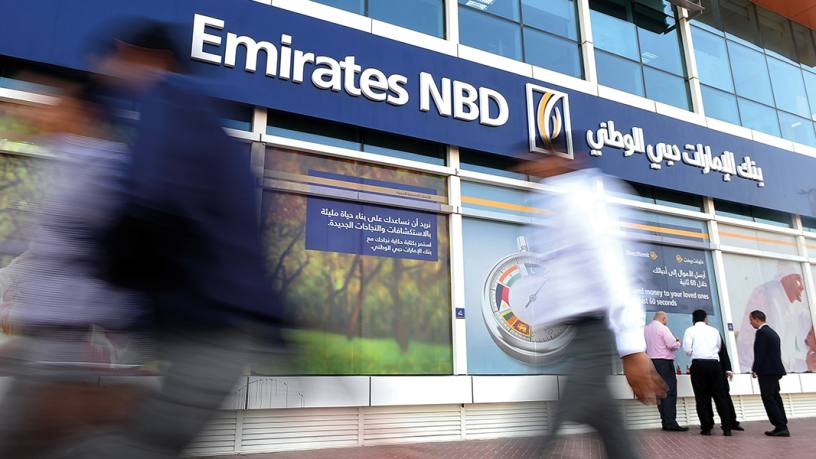Bankers around the world are being forced to contend with great uncertainty and the economic challenges brought about by the coronavirus pandemic. For those in the UAE, the crisis has coincided with a period of low global oil prices, which is further affecting the business environment going into 2021.
“The twin shock of continued low oil prices and the pandemic has put a lot of pressure on [UAE] banks, and on the economy,” says Redmond Ramsdale, senior director and head of Middle East bank ratings, financial institutions, Fitch Ratings. “2020 has been challenging, and 2021 is going to continue to be challenging.”
Strong fundamentals
Emirati banks enter 2021 unsure of how long the global pandemic will last and how quickly their economy will recover. Nevertheless, the banking sector’s fundamentals are strong.
As of the end of the third quarter of 2020, the sector’s Tier 1 capital ratio stood at 16.9%, while its capital adequacy ratio stood at 18%, well above the 13% required, according to data from the Central Bank of the UAE.
2020 has been challenging, and 2021 is going to continue to be challenging
Meanwhile, total assets in the banking sector increased by 7.6% year-on-year, with resident deposits up 6.4% and non-resident deposits growing by 0.8%. Return on equity for the top 10 banks, however, fell noticeably, from 13.6% in the third quarter of 2019 to 8.8% a year later, largely the result of a decline in operating income.
“Globally, the return on equity is much lower for banks in mature markets, so even though it has declined, 8.8% is still a healthy number,” says Saeeda Jaffar, managing director and head of Middle East at global professional services firm Alvarez & Marsal.
Ms Jaffar points out that overall the sector’s cost-to-income ratio has changed little, at around 33% to 34%, even though operating income over assets has declined, “which means the banks have done a relatively good job of controlling their costs, of making sure those don’t creep out of control”.
She adds: “One thing that makes me pause a little is the coverage ratio of the banks. Seven of the top 10 banks now have a coverage ratio below 100. This is something to keep an eye on.”
Central bank steps in
One reason why the banking sector, and the economy in general, has been able to weather the pandemic and low oil prices has been the steps taken by the UAE authorities.
“It has meant that banks have continued to have funds and have continued to be able to lend to the real economy,” says Monica Malik, chief economist at Abu Dhabi Commercial Bank (ADCB). “We haven’t had a liquidity crunch this time around, unlike the global economic crisis in 2009, or in 2015 to 2016 when we had the low oil prices.”
In March 2020, the central bank rolled out the equivalent of $70bn-worth of capital and liquidity measures, aimed at providing economic stimulus. The Targeted Economic Support Scheme (TESS) was also intended to give banks greater ability to lend to businesses.
Ms Malik highlights the reduction of certain requirements for the banks, including the lowering of the reserve requirement for deposits from 14% to 7%, alongside Dh50bn ($13.6bn) of funding from which banks could draw collateralised funds at 0% interest. As of the end of the third quarter of 2020, the major UAE banks had provided borrowers with access to Dh51.1bn under the scheme.
At the same time, most of the lending growth is going to government-related entities, while private sector credit demand has contracted. This likely reflects the macroeconomic uncertainties, potential population decline and labour market concerns of people still working, says Ms Malik.
In late November, the central bank extended the validity of key components of TESS, meaning they will be in place until at least June 2021.
“The fact that they’ve extended key aspects of the TESS programme either to the middle or the end of 2021 is a very positive indication that the central bank understands the pressures on the real economy,” says Ms Malik.
Profits down
Overall, net income at the top 10 UAE-listed banks declined by 3% in the third quarter of 2020, after rebounding strongly in the preceding quarter, according to Alvarez & Marsal’s latest UAE Banking Pulse report.
Profitability has also been hit by lower interest rates, with the UAE authorities following the US Federal Reserve in twice lowering interest rates in March 2020.
At the time, ratings agency Moody’s has said that as a result it expects varying declines in banks’ net interest margins, which had averaged 2.4% system-wide in 2019. “Banks with the highest proportion of corporate loans and highest proportion of current and savings deposits will be the most negatively affected,” it said.
It is no surprise then that among the top 10 UAE banks, total interest income declined by 7.7% in the third quarter of 2020 for the third consecutive quarter, as the lower interest rate environment continued to put pressure on asset yields.
Tough year ahead
Despite government measures, some businesses will struggle to survive the pandemic. “We’re certainly expecting defaults to rise, with banks suffering an increase in impaired loans, that’s particularly as the support measures fall off,” says Fitch’s Mr Ramsdale.
This is partly due to the areas in which banks are exposed: with regards to the UAE, this means real estate and construction, as well as hospitality and transportation.
“Real estate and construction is about 20% of the loan book, and that’s under a lot of pressure,” Mr Ramsdale says. “If you add up transport, logistics, aviation, retail and hospitality, you’re talking a large proportion. There’s a lot of pressure on most sectors. Our expectation is that impaired loans are going to rise from about 5% at the end of 2019 to about 6.5% by the end of 2021.”
Mergers and acquisitions
At the same time, the pandemic could lead to further mergers and acquisitions (M&As) in the banking sector, which is dominated by four major lenders: First Abu Dhabi Bank, Emirates NBD, ADCB and Dubai Islamic Bank (DIB).
Recent years have seen some notable deals. In 2019, ADCB merged with Union National Bank and Islamic lender Al Hilal Bank to create a combined entity with Dh423bn in assets. In January, DIB completed its acquisition of Noor Bank, creating one of the largest Islamic banks in the region.
Banks with the highest proportion of corporate loans and highest proportion of current and savings deposits will be the most negatively affected
“In the past, M&A activity has been about creating shareholder value and strengthening competitive advantage. Most of the large banks in the UAE are large through mergers and acquisitions,” says Mr Ramsdale. “But we’re in an operating environment that’s very challenging, and I think that’s going to take over as the reason that we’re going to see M&A, because you’ve got some very small banks in the UAE with weak franchises, weak pricing power, weak funding and liquidity.”
Larger banks are also spending heavily on digital, an area that could give them a strong competitive advantage by bringing in new customers and improving efficiency. “Emirates NBD is spending an eye-watering amount on digitalisation,” says Mr Ramsdale. “The small banks are not going to be able to compete with this. That lack of spending, because they don’t have it in a more challenging environment, is going to leave them even further behind.”
Emirati banks are likely to continue considering foreign expansion into strategic growth markets such as Turkey and Egypt, given the relative size of the UAE and its concentration of banks. In July 2019, Emirates NBD completed its acquisition of Denizbank, the fifth largest private bank in Turkey.
Moving forward
It is hard to predict what 2021 will bring, and even with positive news about vaccines it could take a while for economies around the world to recover.
In a briefing note in early December, Carla Slim, an economist at Standard Chartered Bank, said that the bank expects the UAE economy to recover gradually in 2021, with growth returning to 1.9%, following an expected contraction of 4.6% in 2020. “The UAE’s domestic economy – particularly Dubai – has positioned itself for a speedy return to pre-pandemic operating levels,” she wrote, adding that Dubai’s hosting of Expo 2020, now scheduled for October 2021, will add impetus to the recovery in tourism, trade and logistics.
Ms Slim added that, in the medium term, “new growth drivers should take over from traditional ones. For example, the recent signing of the UAE-Israel peace accord could increase scope for collaboration on projects related to innovation and technology.”
That would be good news for the banking sector as it looks to move beyond a difficult 2020.













